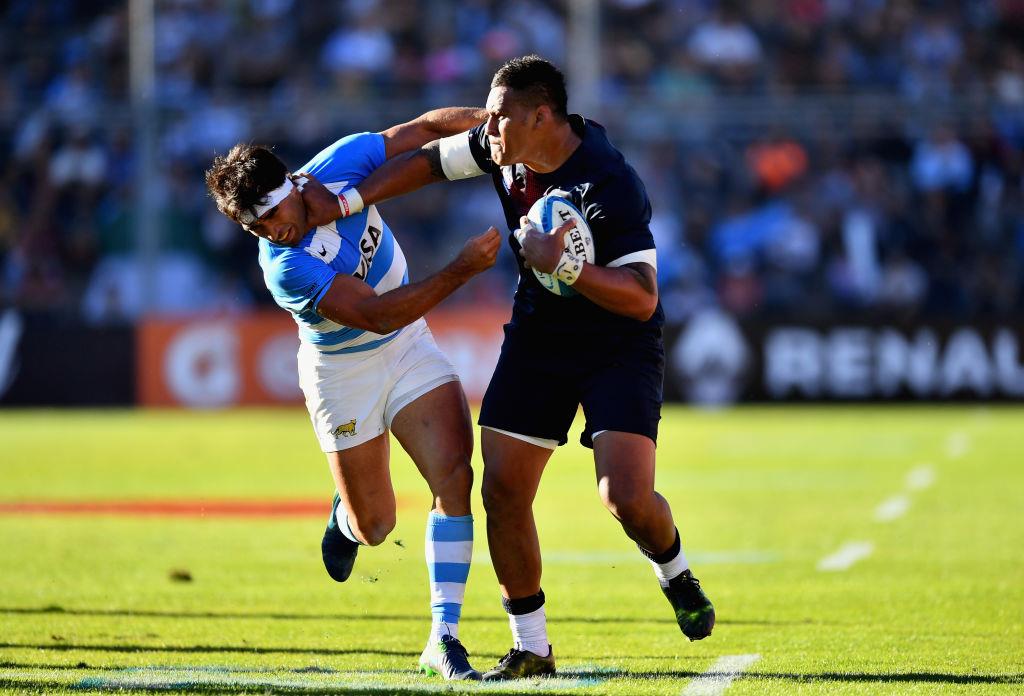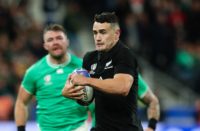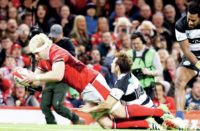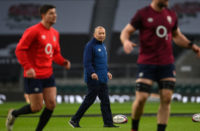By Nick Cain
There is a changing of the guard in the England back row, and Australia and Argentina will be sniffing a weakness. Even Samoa might fancy they can cause trouble. It's called inexperience, and it is reflected in one of the greenest back-row selections in memory after Eddie Jones announced his squad for the Autumn Series at the Old Mutual Wealth headquarters in London.
Jones is not risk-averse, as he showed by taking a number of unproven youngsters to Argentina last summer – but this season he has gone a step further, jettisoning seasoned campaigners like James Haskell and Tom Wood and replacing them with new generation marauders.
The England coach has called up three players, openside flankers Sam Underhill and Tom Curry, who have one cap each, and a back row utility, Exeter's Sam Simmonds, who has none. In addition, he has included another callow ‘apprentice' by bringing Zach Mercer, the Bath No.8 or blindside, into the fold.
There is a temptation to label it Eddie's back row crèche, with Curry only 19, Mercer 20, Underhill 21, and Simmonds the old stager at 22. Even the experienced hands are not exactly seasoned, with Nathan Hughes – who is now first-choice No.8 with Billy Vunipola out of action – boasting only 10 caps gained over a single year at international level.
The only back rower Jones has named who bucks the trend is his old favourite, Chris Robshaw, who he confirmed is his first-choice blindside. However, while Robshaw's 56 England caps brings a semblance of gravitas to the loose trio, it is not enough to mask the size of the gamble.
This is most glaring at No.8, one of the most influential positions on the pitch, especially with the re-invention of attacking from the base of the scrum. Jones says that Hughes “has been playing very well”. However, he is right in the firing line as a heavy-duty carrier, and should he be injured Jones said he considered Simmonds the likely replacement.
This is significant because the whole structure of the England back row would shift from the power carries made by big tanks like Billy Vunipola and Hughes to a much more dynamic, lightweight unit. Jones has said already that he considers Simmonds to be much more of an openside than a No.8, which is not difficult to understand when you take into account how much smaller he is than Hughes.

Where Hughes is a heavyweight at 6ft 4in and 115kg (18st), the Exeter man is more of a middleweight at barely over 6ft and 98kg (15st 7lb). Curry and Underhill are slightly taller than Simmonds and a bit heavier, with Mercer at 6ft 3in and 105kg (16st 7lb) the biggest of the new intake.
When I suggested to the England coach that he was exposed at No.8 he accepted the point, but added that if his side are going to be stretched this part of the curve before the 2019 World Cup is the least damaging time.
“That is the great thing about now. We want this to happen now, we don't want it to happen at the World Cup. You go to the World Cup, Billy gets injured, Nathan gets injured, and everyone is looking at each other saying what are we going to do? Now we have got an opportunity to look at guys like Simmonds and Mercer and see whether they have got the potential to be Test No.8s. If they are we can invest the next two years in them and get them right. Short term, yes (we are exposed), but this is a great opportunity for us longer term.”
Having advocated for years that England have to develop young Test-calibre opensides it is right to applaud Jones for grasping the nettle – and to support his view that this is the time to be bold.
His enthusiasm was clear as he talked about the race for the openside shirt between the heavy-tackling Underhill and the more mobile Curry – “We've got a great little battle there” – and it did not dip when he offered his assessment of Simmonds.
Jones said the talk surrounding Simmonds, who he says covers 6, 7 and 8 like the injured Jack Clifford, has centred mainly on the five tries he has scored for Exeter this season. However, the England boss said Simmonds has more important strengths. “He runs very good support and defensive lines. That's the thing I like about him the most. He has great acceleration, and he's not afraid to put his head over the ball.”
If that sounds like more 7 territory than 8, it may be that Jones is toying with the idea of playing two openside flankers, say Underhill and Simmonds – in the same way Australia are with Michael Hooper and Sean McMahon – with Hughes at 8. An alternative would be Simmonds at 8, with Underhill at 7 and a combination of Robshaw and Courtney Lawes at blindside.
The only note of caution is that the overall back row selection seems unbalanced, with the additional speed at No.7 not being offset by a big unit as cover for Hughes and Robshaw. However, Jones is too much the strategist not to take it into account, and he mentioned three players – two outside the squad in Don Armand and Mark Wilson, and another inside it in Charlie Ewels – in despatches.
Ewels is a lock who has played blindside and, occasionally, No.8 for Bath. The versatility to play at elite level in more than one position is an attribute that the England coach values highly, and he commented: “Ewels is someone we're going to have a look at. He lacks a bit of acceleration – but he's potentially (an option) long-term.”
Jones also noted that Armand, who has played across the back row for Exeter, and was outstanding in last weekend's European Cup away win at Montpellier, was not far away. He said of the rangy 6ft 4in flanker: “He has great lineout attributes and is very good wide out, but we like our No.6s to carry more in the traffic.”

Newcastle grappler Wilson, who covers 6 and 8, received a similar notice. “Mark Wilson is again unlucky to miss out. He had a great tour for us to Argentina but we just feel he is a little bit off the pace at the moment. We are chatting to him all the time about what he is doing.”
The long-shot at No.8 is Mercer, but Jones' comments on the youngster's progress suggest that if he continues to mature at the current rate he will be promoted. “He's got good feet and great natural attributes. He's grown up. There's been the big influence of Todd Blackadder, who was one of the most selfless players in the game – his coaching (at Bath) is first class, and England are lucky to have it.”
At the other end of the age-scale the prognosis for Haskell, 32, is less rosy, although Jones was at pains to say that dropping him was about current form rather than calling time on the Wasps flanker's 75-cap career. “At the moment he's just not playing well enough, but he's been a great servant for England and if he plays well there must be a way back in. We don't close the door on anyone.”
Haskell has proved in the past that being written off only spurs him on. However, this time the climb may be too steep, particularly as the aftermath of the foot injury he sustained in Australia well over a year ago still requires careful management.
Jones said he went to Haskell's home to tell him face to face. Although Jones joked, “he chased me in his tractor”, there is a welcome symmetry in that sign of respect between coach and player.
Haskell's depth of experience will be missed in this Old Mutual Wealth series, but the new back row experiment promises to be fast and furious – and this is the right time for Jones to put his young raiders to the test.

























